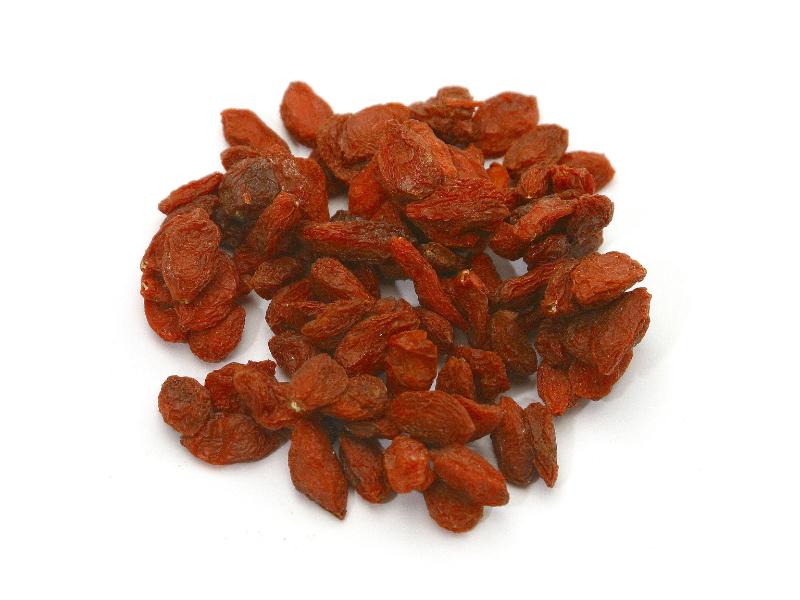Search in medicinals

Alternate English names: matrimony vine [fruit] goji fruit
Alternate Chinese names: 杞子 <i>qǐ zǐ</i>; 枸杞 <i>gǒu qǐ</i>; 茍起子 <i>gǒu qǐ zǐ</i>; 狗奶子 <i>gǒu nǎi zǐ</i>; 枸杞果 <i>gǒu qǐ guǒ</i>; 枸茄茄 <i>gǒu qié qié</i>; 血枸子 <i>xuè gǒu zǐ</i>; 血杞子 <i>xuè qǐ zǐ</i>; 枸杞豆 <i>gǒu qǐ dòu</i>
Kingdom: Plant
Origin in PRC Pharmacopoeia: <i>Lycium barbarum</i> L. (<i>PRC Pharmacopoeia</i>)
Origin in unofficial sources: <i>Lycium chinense</i> Mill.; <i>Lycium barbarum</i> L.* [= <i>L. halimifolium</i> Mill.]; <i>Lycium dasystemum</i> Pojark.; <i>Lycium potaninii</i> Pojark.
Use: Medicinal and alimentary
Category: Supplementing agents / Yīn-supplementing agents
Properties: Sweet; balanced.
Channel entry: Liver and kidney channels. (some sources also say lung channel.)
Actions and indications: Supplements the liver and kidney, brightens the eyes: Insufficiency of the liver and kidney, manifesting in conditions such as aching lumbus, seminal emission, dizziness, loss of visual acuity, clouded vision, or dispersion-thirst.
Dosage and method: Oral: 5–15g in decoctions.
Warnings: Contraindicated in externally contracted repletion heat, in spleen vacuity with dampness, and in diarrhea.
Product description: The dried fruit is ovate, spindle-shaped, or elliptical. It is 1–1.6 cm long, and 5–7 mm thick. The skin is bright or dark red with a good sheen, turning black and dull when stored for a long time. At one end is the vestige of a stalk, appearing as a white fleck, and at the other there is a small, nipple-like protuberance. Amid the soft, moist, semitranslucent flesh are 10 kidney-shaped seeds, 2.5 mm long, and 2 mm wide, and 0.5 mm thick. These are earth color, sometimes darker at the edges, and bear fine depressions on the surface, and hilum on the indented side.
Quality: Large red fruits with few seeds and sweet flesh are best.
Production area: <i>Lycium chinense:</i> Most parts of China. <i>Lycium barbarum:</i> Níngxià, Gānsū, Qīnghǎi, Inner Mongolia.
Back to search result Previous Next